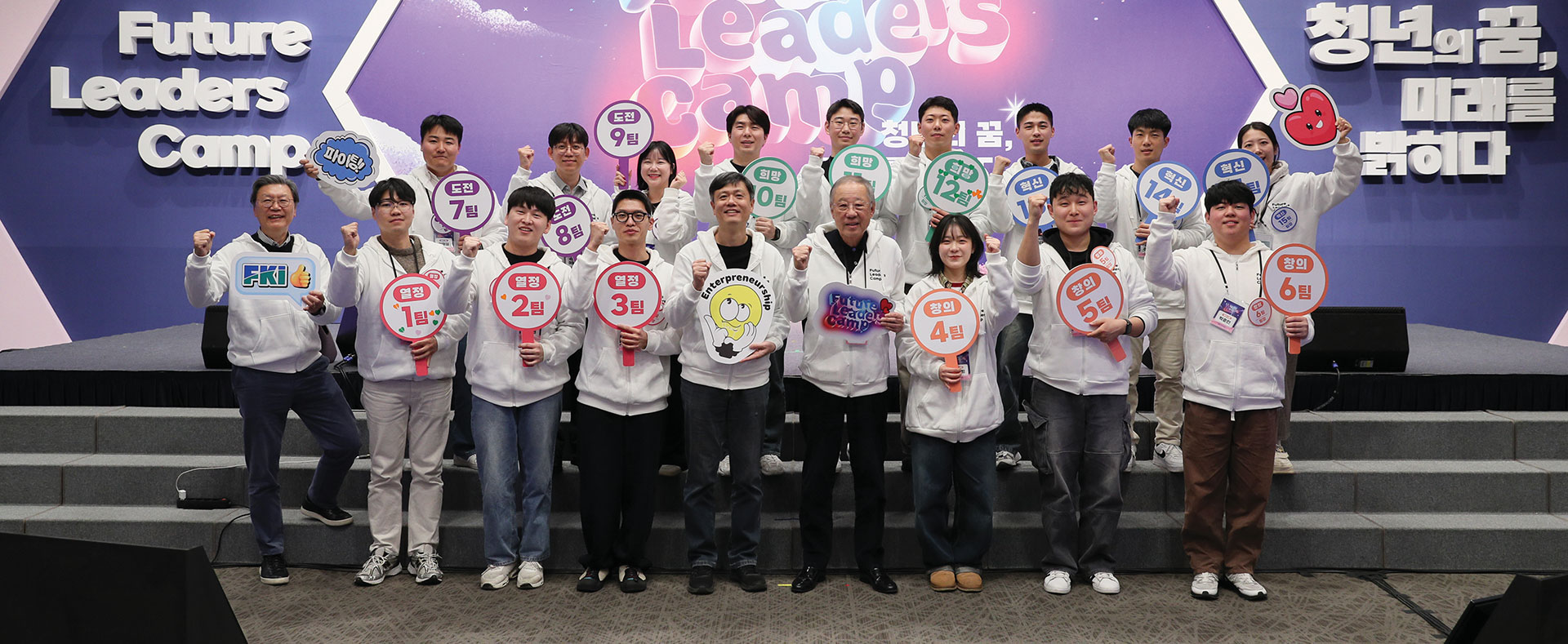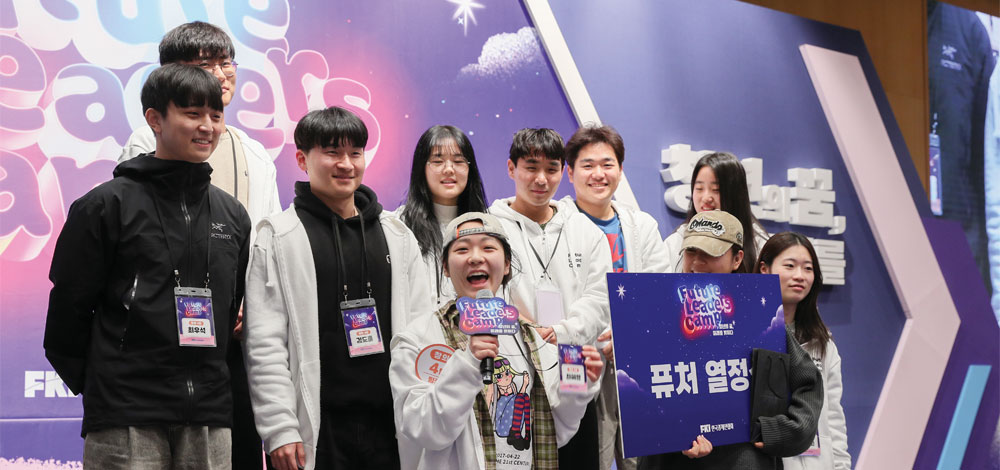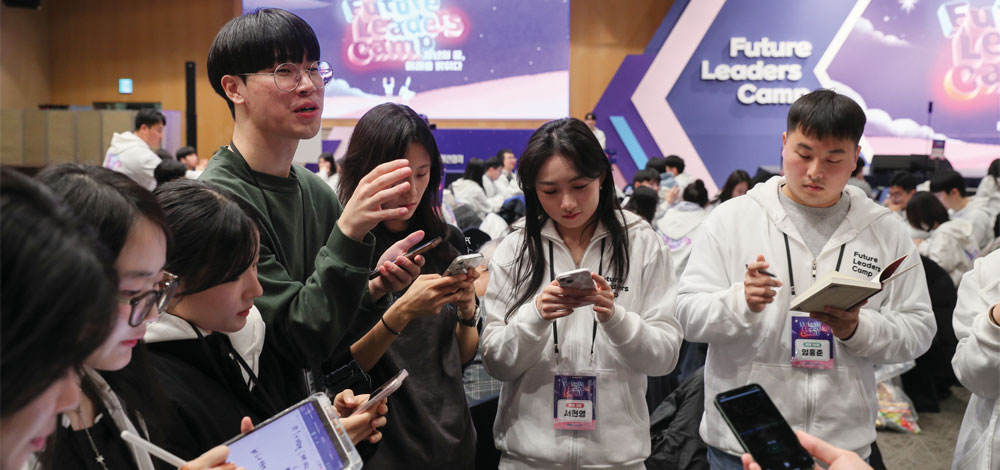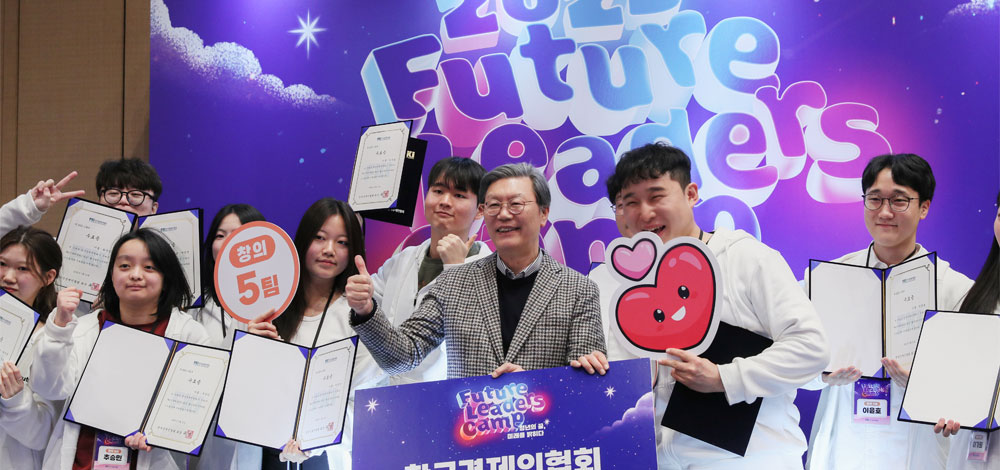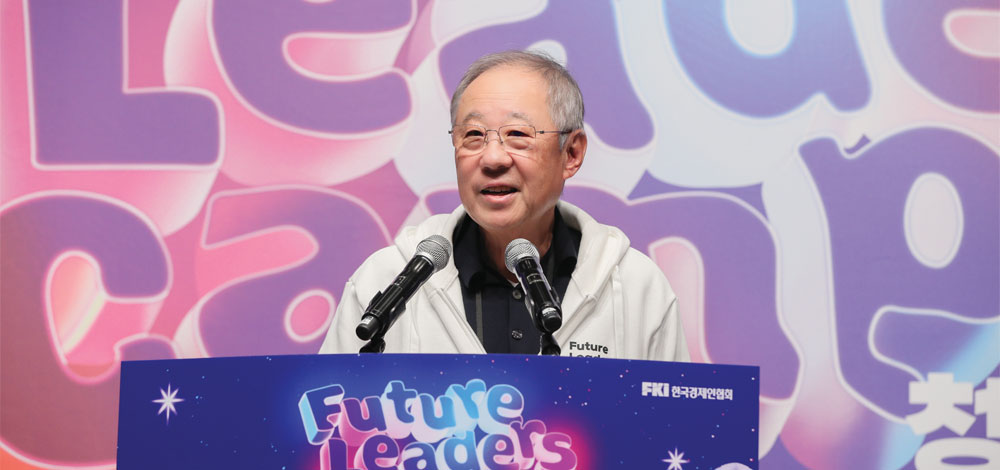in Focus
Youth’s Dreams, Lighting Up the Future
2025 FKI Future Leaders Camp
FKI organized a special event for approximately 150 young people aspiring to become future business leaders. From January 9 to 11, the 2025 FKI Future Leaders Camp was held over three days and two nights in Gangneung, Gangwon Province. Under the slogan, “Turn On the Switch: Youth’s Dreams, Lighting Up the Future,” the camp featured talk sessions with four of Korea’s leading experts, offering valuable insights and passionate discussions.
Photographer Dong-yeol Kim
What is the FKI Future Leaders Camp?
The FKI Future Leaders Camp is an annual youth vision camp hosted by FKI every January. The 2025 Future Leaders Camp offered various programs aimed at developing entrepreneurial spirit and leadership skills, including talk concerts, team-building activities, business model competitions, and a performance by the Gangneung Philharmonic Orchestra. The 150 participants were selected through an open application process and came from diverse backgrounds, including university students, startup CEOs, soldiers, doctors, and broadcast producers. This year’s camp, the second edition since its launch, attracted over 500 applicants, resulting in a highly competitive 3:1 acceptance rate.
![]() January 9–11, 2025 (2 nights, 3 days)
January 9–11, 2025 (2 nights, 3 days)
![]() Lakai Sandpine Resort, Gangneung, Gangwon Province
Lakai Sandpine Resort, Gangneung, Gangwon Province
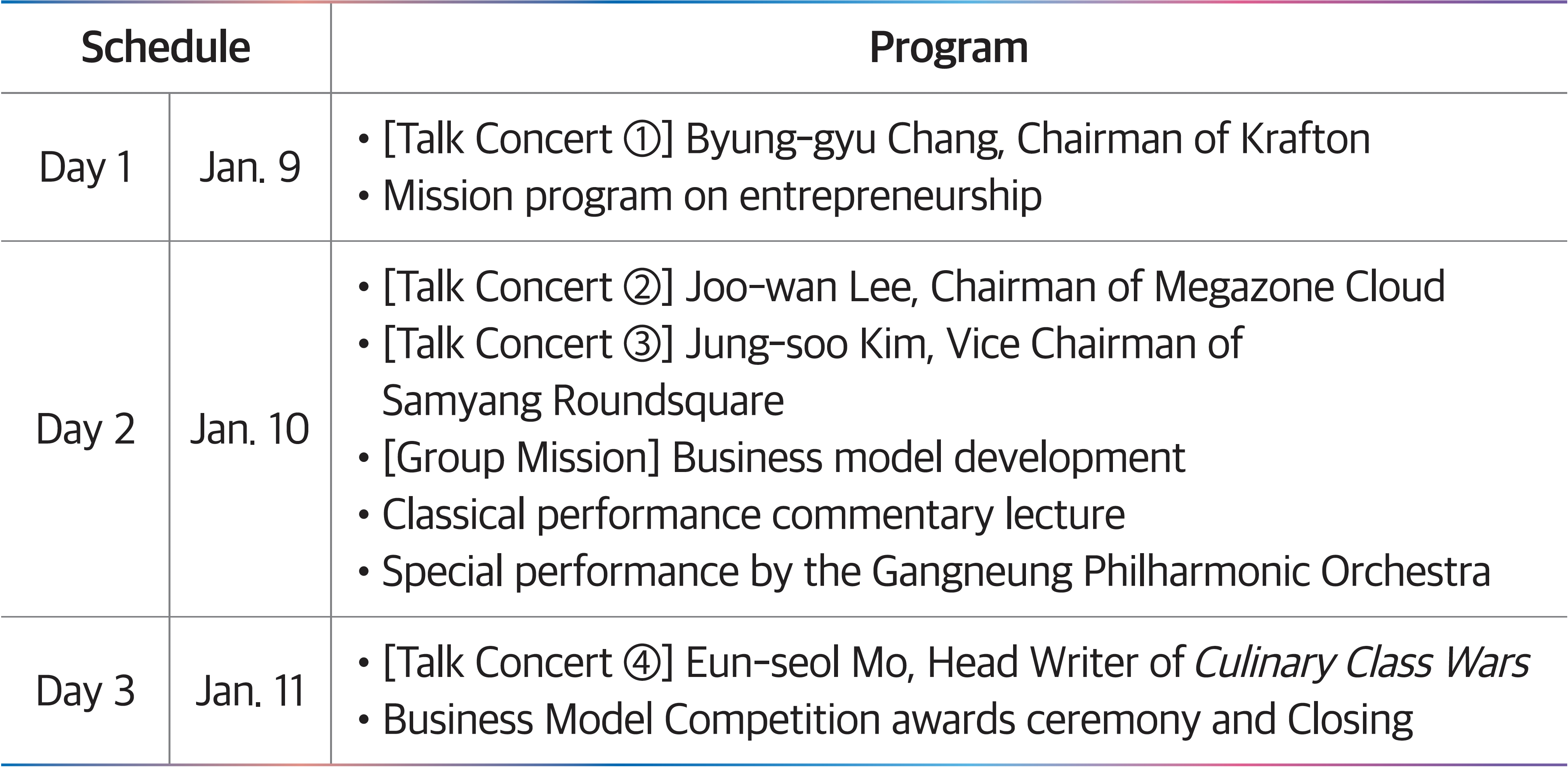
Just like this year’s slogan, “Turn on the switch,” I hope this camp becomes the starting point for you to dream big and illuminate your future—and ultimately, the future of Korea and humanity.
- Jin Roy Ryu, Chairman of FKI
From One-Way Exports to Global Growth:
Advice for Future Talent
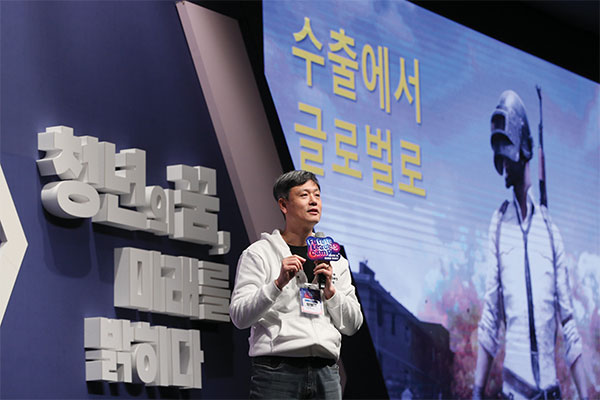
Our country has experienced continuous export-led growth driven by human talent. However, now it’s time to transition to “global growth”—where we demonstrate leadership in the global market. I hope that you, as future talent, will lead this shift by embracing self-directed learning and showing the courage to take on challenges without fear of failure.
Byung-gyu Chang, Chairman of Krafton
Korean popular culture—including dramas, films, and games—is gaining widespread love worldwide, marking the era of the “K-content syndrome.” Krafton’s game, “PUBG: Battlegrounds,” released in 2017, has become more influential year after year. After transitioning the PUBG PC and console versions to a free-to-play model, it reached a peak of 890,000 concurrent players in 2024, maintaining strong traffic growth. For the past two consecutive years, it has been recognized as the most popular Korean PC and console game among international players (Korea Creative Content Agency, 2024–2025). How did Krafton create the gold standard for FPS games and rise as a global company?
From Export-Driven Growth to Leadership in the Global Market
Korea’s growth has long been driven by human talent and technological strengths through an export-focused strategy. Over the decades, Korea’s key industries and products—from wigs to automobiles and semiconductors—have changed, but the core national strategy has remained the same: producing products tailored to external demand. However, we must now go beyond manufacturing-based growth and seek new pathways. While exports remain a crucial driver of growth, we need to shift from one-way exports to demonstrating leadership in the global market. This involves expanding from manufacturing into the global service industry to achieve sustained global growth.
Krafton’s Journey to Becoming a Global Company
The gaming industry is inherently a global business. I founded Bluehole Studio (now Krafton) in 2007 because I was drawn to the global growth potential of the gaming industry. Launched in March 2017, the FPS survival game “PUBG: Battlegrounds” generated over $100 million in cumulative revenue and sold 4 million copies within just 13 weeks of its release, becoming the best-selling PC game of all time. Today, over 90% of Krafton’s revenue comes from overseas markets, and the company’s workforce reflects this global reach, with employees from diverse nationalities. Krafton has become a leading name in the global gaming service industry.
The driving forces behind this success were two-fold: immersive focus and readily taking on challenges.
When computer science was considered an unpopular field, I developed a course registration system for my university. Although it was a student-built system, the university officially adopted it, making it available to all students. Years later, when I started my own business, I immersed myself completely—cutting hours and minutes from commuting, meal times, and sleep to give work my undivided attention. My enjoyment of the work enabled this laser focus and I was able to accomplish in a year what would have typically taken two or three years. Krafton’s rise to becoming a global service company has been a continuous journey of immersion and challenge—and I still enjoy every step of it today.
Self-Directed Learning and Facing Challenges
As you prepare to lead future global growth, I’d like to offer a few pieces of advice. First, embrace a mindset of continuous learning and pursue self-directed growth. Second, show strong focus and the courage to face challenges without fear of failure. Third, develop the ability to collaborate effectively through clear communication.
I hope this camp becomes a starting point for you to discover your unique identity. Live a life of consistent growth by exploring your identity with sincerity and looking inward.
A World Transformed by the Cloud:
Walking Toward the Future
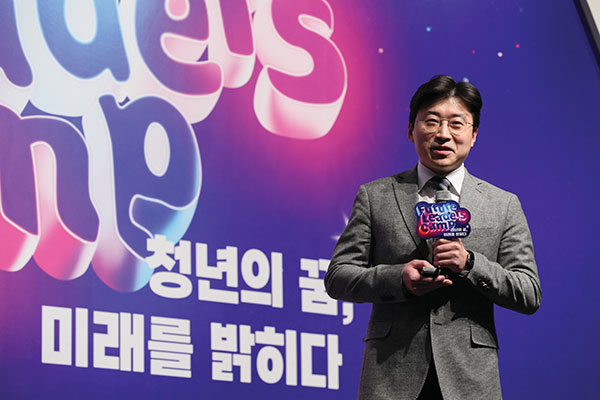
Unprecedented changes are sweeping through the IT sector, creating abundant opportunities and possibilities. Among these, AI, quantum computing, and robotics will be the key trends to watch in 2025. While setting clear goals is essential for achieving your dreams, equally important is the attitude you maintain as you work toward them. If you have a dream and a vision, take the long view and be patient. Keep working steadily toward your goals. I hope each of you, with your own unique visions, will achieve remarkable success.
Joo-wan Lee, Chairman of Megazone Cloud
In an era where technological innovation is occurring so rapidly that it’s difficult to predict what’s next, let’s explore the near future through the lens of three critical trends: AI, quantum computing, and robotics. Each of these fields are progressing rapidly on its own—but if they begin to work together harmoniously, the scale of transformation could surpass anything we can currently imagine.
AI: The Immediate Future
AI is one of the most prominent and rapidly evolving technologies today. Major AI models such as OpenAI’s ChatGPT, Anthropic’s Claude, and Google’s Gemini are driving continuous innovation. Despite the rapid pace of AI development, we are still in the early stages — comparable to the release of the first black-and-white televisions. Just as television evolved in stages from CRT to LCD, OLED, flexible, and stretchable displays, AI is also poised for sustained and transformative growth.
AI is becoming a dominant force among global unicorn companies. In 2024 alone, 10 out of approximately 150 unicorn companies in the United States emerged from the AI sector. While Asia still lags behind North America in terms of AI model development, it holds competitive potential in the application and integration of AI technologies. Megazone Cloud has also focused more on applying and utilizing AI within business environments rather than developing AI models themselves. A key trend to watch is the shift from generative AI to agent-based AI, which could redefine how businesses and individuals interact with AI systems.
Quantum Computing: The Future Game-Changer
Quantum computing is often described as a game-changer for future industries. Problems that would take current computers astronomical amounts of time to solve could potentially be processed in mere minutes with quantum computers.
Like AI, the quantum computing industry is being led by North America and Europe. Although the market size remains small, it is growing rapidly, with an annual growth rate of 30–40% as it transitions from research labs to commercial applications. Major cloud providers like Amazon Web Services, Microsoft, and Google have all announced large-scale investments in quantum computing.
While quantum hardware companies are making significant technical strides, Megazone Cloud is focusing on the software side of quantum computing. The company is developing quantum software for real-world applications in industries such as chemistry, finance, security, and healthcare. For example, Megazone collaborated with Seoul National University to develop a quantum emulator based on quantum computing hardware, and announced the completion of its development at the end of 2024. This type of development is expected to accelerate the practical application of quantum computing.
Robotics: Stepping into Everyday Life
Robotics technology is expected to make significant strides in the coming future, including this year. By integrating robotic solutions, industries that require large labor forces—such as elderly care and smart farms—could see substantial improvements. Robots are also likely to take over repetitive tasks in the retail sector, from inventory management to delivery. With sufficient training data, robotics could even extend to fields like drug development, diagnostic testing, and precision surgery. A notable example is the development of the surgical robot “da Vinci” by research teams at Johns Hopkins University and Stanford University. They applied imitation learning technology to enable da Vinci to perform suturing with human-like precision. Currently, over 7,000 da Vinci robots are in use worldwide, and more than 50,000 surgeons have been trained using this system.
Buldak Ramen,
Talking About the “K” That Created a Global Trend

The global trends of K-Food and K-Spicy, symbolized by Buldak Ramen, are the result of a narrative of challenge and relentless effort from the small country of Korea. Even at this moment, the global market continues to change constantly, but one thing that remains unchanged is your perseverance. Based on the experiences and lessons gained from Future Leaders Camp, I hope you make the right choices in your respective fields and create your own unique trends.
Jung-soo Kim, Vice Chairman of Samyang Roundsquare
Samyang Roundsquare (formerly Samyang Foods Group) shook up the ramen market with the release of Buldak Ramen in 2012. How did Samyang Roundsquare create the global Buldak Ramen craze?
Buldak Ramen: Not Just Ramen, but Also Culture
The Buldak brand has become an icon of spiciness across various product categories, including ramen, sauces, and snacks. Its flagship product, Buldak Ramen, quickly built a global fanbase, with total sales reaching approximately 7 billion units. On YouTube alone, there are over 12 million “Spicy Challenge” videos featuring Buldak Ramen. This proves that Buldak Ramen is not just a spicy food but a cultural phenomenon representing “challenge and fun.”
The secret behind the Buldak brand’s global appeal lies in two key factors. First is the distinct flavor created by Samyang’s proprietary ingredients and blending technology. The “deliciously spicy” taste that relieves stress and provides a refreshing feeling has become a shared experience among consumers, turning “spicy” into a global trend. Second is the product’s accessibility and versatility. The dry stirfried noodle format is familiar in both Western and Southeast Asian markets. Social media content featuring various combinations with cheese, tuna, corn, and other ingredients has fueled its popularity, transforming it into a playful food culture. Based on this reaction, Samyang has released localized products such as Habanero Buldak in the US and Yakisoba Buldak in Japan, showcasing the diverse appeal of Buldak.
Keywords for a Global Trend Leader
In a rapidly changing digital and global market, the ability to create and expand trends is essential for maintaining success. The first keyword for a global trend leader is cultural understanding and empathy. Focusing solely on product sales and revenue makes it difficult to survive in the global market. It’s important to naturally connect Korean culture with local cultures through the process of encountering, adapting to, and blending into different cultural environments.
The second keyword is storytelling. Even similar products can generate different levels of consumer loyalty depending on the presence or absence of storytelling. Samyang built its brand image as a fun and engaging leader by marketing the experience of eating and enjoying Buldak Ramen, which strengthened its bond with consumers and fostered brand loyalty.
The final keyword is boldness—the courage that a leader must possess. In fact, Buldak Ramen faced numerous obstacles even during its development phase. It was criticized for being “too spicy to commercialize,” “too spicy for foreign markets,” and unlikely to succeed even if localized. However, with confidence in the uniqueness of its spicy taste, Samyang persevered through a year of research and eventually launched Buldak Ramen, breaking preconceived notions.
A leader is someone who confronts fear, and what matters most as a leader is the courage to persist. Making decisions despite fear and taking responsibility for those choices—that is the true essence of a leader who creates trends.
The Secret to Communication
in the Global Mega-Hit Variety Show Culinary Class Wars
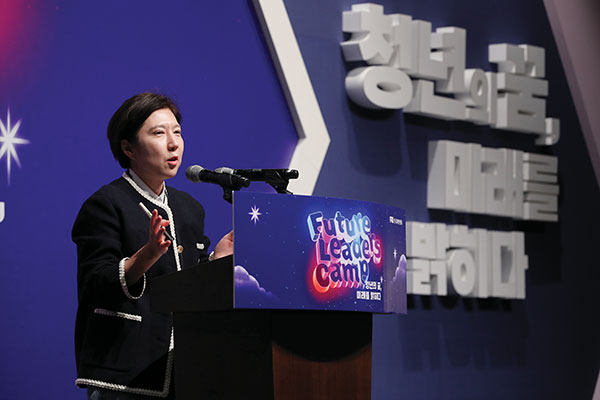
The first principle for a project leader is to set clear goals. Once the goal is established, it must be communicated precisely to the team. If a team member misunderstands or is opposed to the goal, potential conflicts should be resolved through sufficient dialogue before starting the project. Successfully leading a project requires running the team as a single, cohesive unit.
Eun-seol Mo, Head Writer of Culinary Class Wars
One of the hottest variety shows of 2024 is undoubtedly the Netflix original series Culinary Class Wars. The show features top underground chefs (referred to in the show as “Black Spoons”), known for their exceptional cooking skills despite their lack of fame, challenging Korea’s top celebrity chefs (referred to in the show as “White Spoons”) in a fierce battle involving 100 chefs. It became a sensation, debuting at No. 1 in Netflix’s non-English TV category during its first week and holding the top spot for three consecutive weeks. I believe Culinary Class Wars succeeded because over 500 crew members and cast worked together toward a common goal. As the head writer, I experienced firsthand the importance of teamwork while acting as the central hub for communication. Here are some key examples.
How Culinary Class Wars Was Born
With Korean cooking shows having largely disappeared from the entertainment scene, Netflix Korea and I joined forces to create a new culinary program. While casting the show, we met with both renowned chefs and those who were relatively not well-known. This contrast between the famous and the not-yet-discovered led to the concept of Culinary Class Wars. Netflix initially expressed concern that a literal translation of the original Korean title: “Black and White Chef” may present a racesensitivity risk when launched globally. We clarified that the show’s referral to “Black Spoons” and “White Spoons” did not refer to race but rather to the visual contrast of “black and white” seen in chess or Go, symbolizing the visual and competitive dynamic of the show. We also took Netflix’s feedback seriously and decided to release the show under the title Culinary Class Wars for international audiences.
Turning Rejection into Opportunity
One of the most critical aspects of preparing for the show was securing the right lineup of contestants and judges. In particular, finding suitable judges was key. I believed that Jong-won Paik and Sung-jae Anh were the perfect fit for the show. Jong-won Paik is not only a popular TV personality but also a successful businessman, which means he carefully weighs the pros and cons of any project before committing. To convince him, we approached the program from a business perspective, highlighting the show’s strengths and the potential benefits of international exposure. Chef Sung-jae Anh, on the other hand, was initially skeptical about appearing on the show. His distrust stemmed from the way past cooking shows had often focused more on drama and sensationalism than on culinary expertise or authenticity. We encouraged him to openly share his concerns about the show, and we carefully addressed each one, building his trust in the production team. The process of recruiting the 100 chefs for the competition was similarly challenging. Convincing the high-status, accomplished celebrity chefs to join the show required a tailored approach. We studied each contestant’s background and motivations, customizing our pitch to match their individual goals and circumstances.
Unifying Through Culinary Authenticity
After casting was completed, the next step was to ensure that the 500-member production team—including producers, writers, set designers, food stylists, audio engineers, and camera operators—clearly understood their roles and shared the same goal. A perfect show can only be created when everyone fully understands the program’s intent and direction.
Once filming began, an unexpected twist emerged. Instead of sharp class conflict, a sense of harmony stood out. The Underground chefs showed respect for the time and effort the celebrity chefs had invested to reach their current status. Meanwhile, the celebrity chefs saw reflections of their own past in the underground chefs and offered them encouragement. I believe this is what sets Culinary Class Wars apart from other cooking shows. All the participants gave their best under the shared goal of authenticity in cooking, and in the end, it resulted in a successful outcome.
